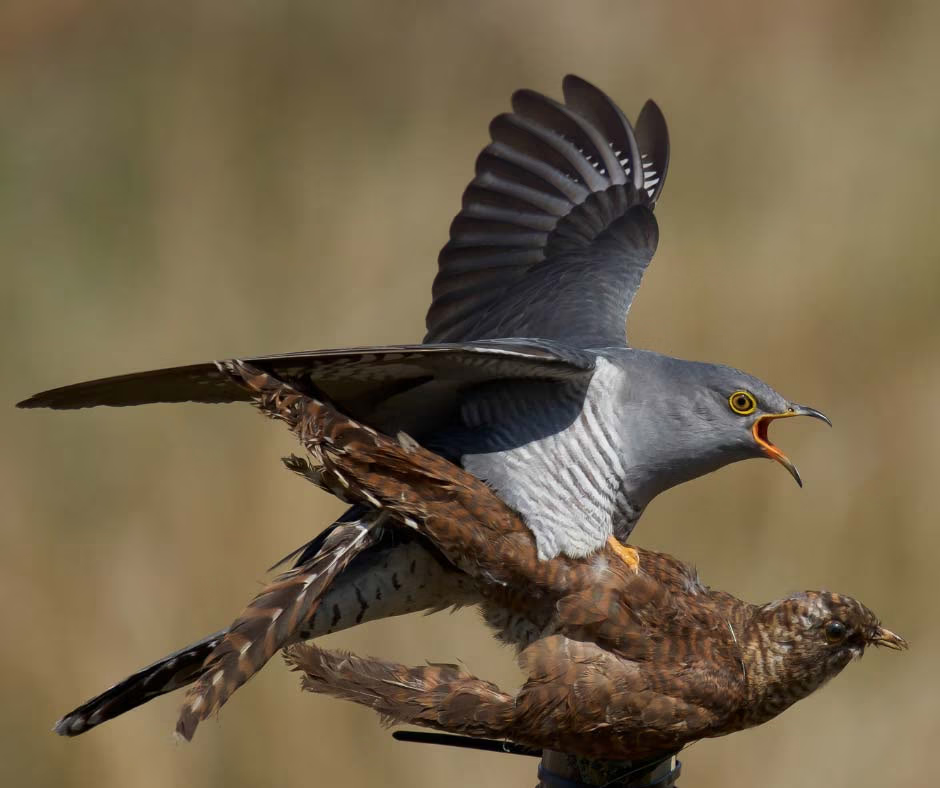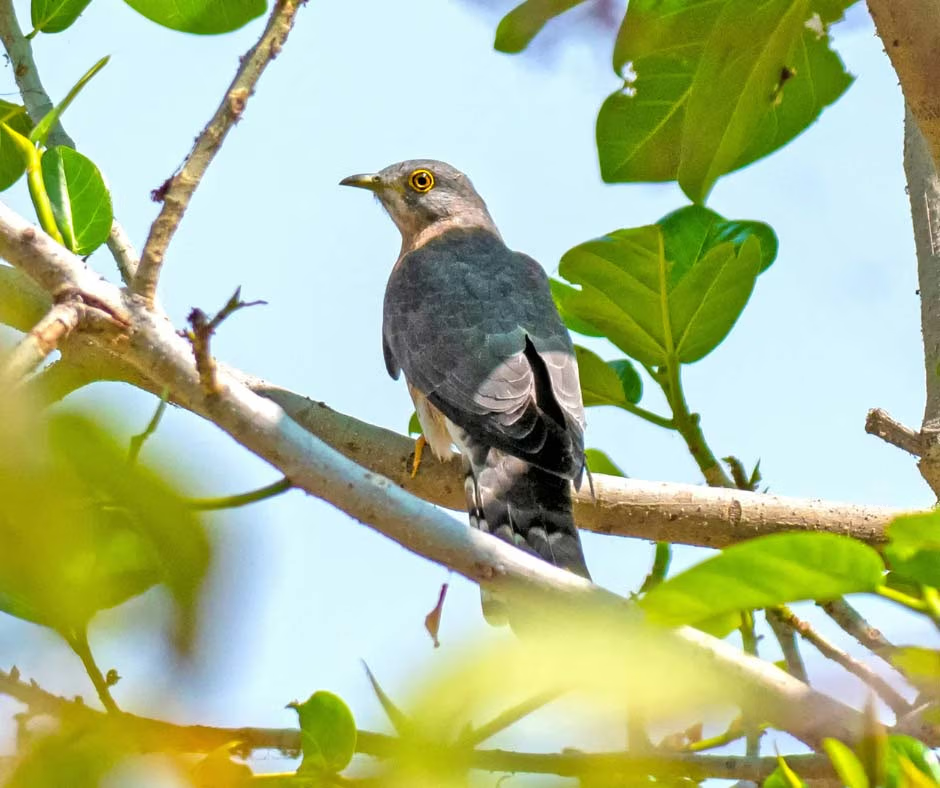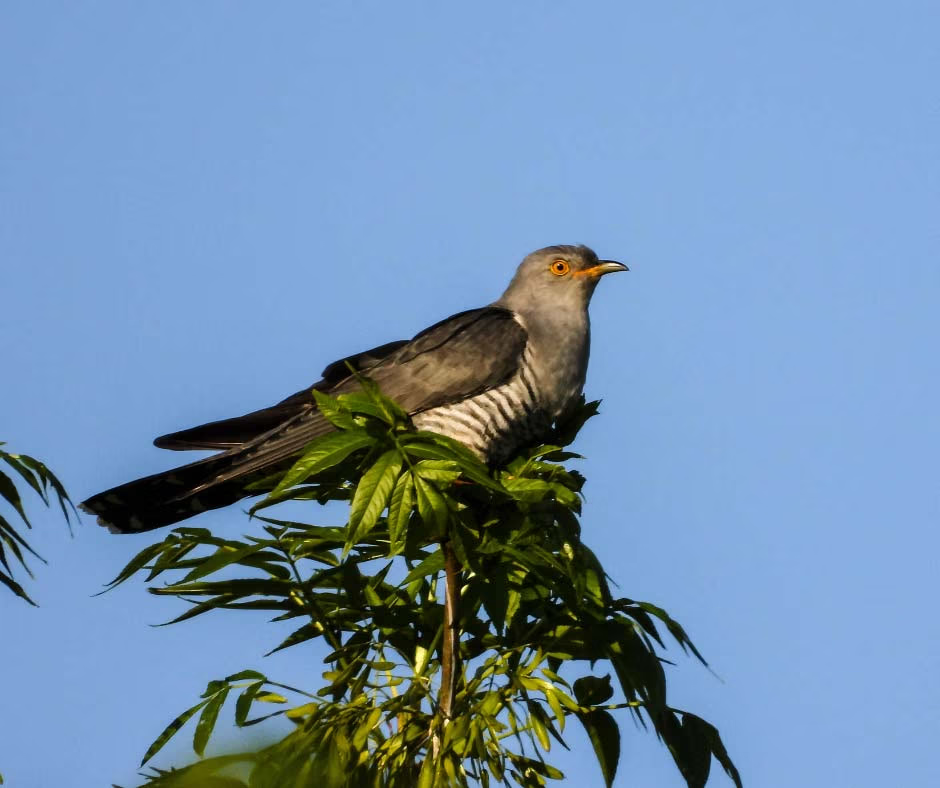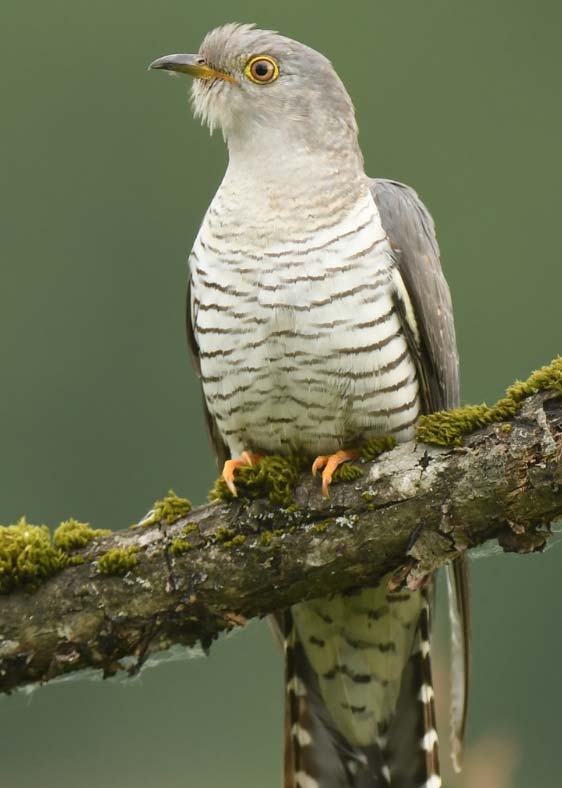Common Cuckoo
Cuculus canorus
Life History
Length: 32 -34 cm
Wingspan: 58cm
Weight: 110-130g
Diet: Insects, with hairy caterpillars being a particular favourite
Average lifespan: 6 years
When to see them: Late March to June
UK population: Between 10,000 to 20,000 breeding pairs
UK conservation status: Red under the UK’s Birds of Conservation Concern

About
The common cuckoo (Cuculus canorus) is a slender, elegant bird with soft grey plumage, a sleek body, and a long tail, often mistaken for a small bird of prey when in flight. It has a pale belly marked with dark barring and sharp yellow eyes that give it a striking look. Native to Europe and Asia, the cuckoo is a long-distance migrant, spending the summer months across the UK and Europe before heading to Africa for the winter. Despite its plain colouring, its distinctive shape and secretive nature make it a fascinating bird to spot in the wild.
Behaviour
One of nature’s more unusual birds, the cuckoo is best known for its familiar “cuck-oo” call that signals the arrival of spring across much of Europe and Asia. But what really makes this bird stand out is its sneaky parenting style—it lays its eggs in the nests of other birds and lets them do all the hard work of raising its chicks! This clever trick has fascinated people for generations. While cuckoos are still fairly widespread, their numbers are dropping in some areas, so it’s more important than ever to keep an eye on their wellbeing and protect the habitats they rely on.


Their Threats
Common cuckoo numbers have been declining in parts of the UK, mainly due to changes in habitat, climate, and a drop in the availability of their insect food sources—especially caterpillars. These changes have affected not only the cuckoo but also the host bird species they rely on to raise their young. To help understand and reverse these declines, the British Trust for Ornithology (BTO) is leading vital research, including tracking cuckoos on their long migration to Africa. By using satellite tags, the BTO is uncovering important details about the routes cuckoos take and the challenges they face along the way. This work is helping conservationists pinpoint where support is most needed to protect these remarkable birds throughout their journey.
How you can help
- Create wildlife-friendly gardens – Grow native plants and shrubs to attract caterpillars, moths, and other insects that cuckoos feed on.
- Support wetland and heathland conservation – These are key habitats for cuckoos and their host species, so backing local conservation projects makes a real difference.
- Avoid pesticides – Chemicals reduce insect populations, which are vital food sources for cuckoos and other wildlife.
- Record cuckoo sightings – Report sightings to organisations like the BTO to help track population trends and migration patterns.
- Support conservation charities – Donations or volunteering for groups working on cuckoo research and habitat restoration can directly aid their survival.
